Learn all about our closest relatives – the gorillas, in our expert guide which explains why these intelligent mammals are endangered species and conservation work to protect them from extinction.
How many different species of gorilla are there?
There are two species of gorilla - the eastern gorilla (Gorilla beringei) and western gorilla (G. gorilla). Each of these is divided into two subspecies - eastern lowland gorilla (G. b. graueri) and mountain gorilla (G. b. beringei), and western lowland gorilla (G. g. gorilla) and cross river gorilla (G. g. diehli). We share 98.3% of our DNA with gorillas, making them our closest relatives after chimpanzees and bonobos.
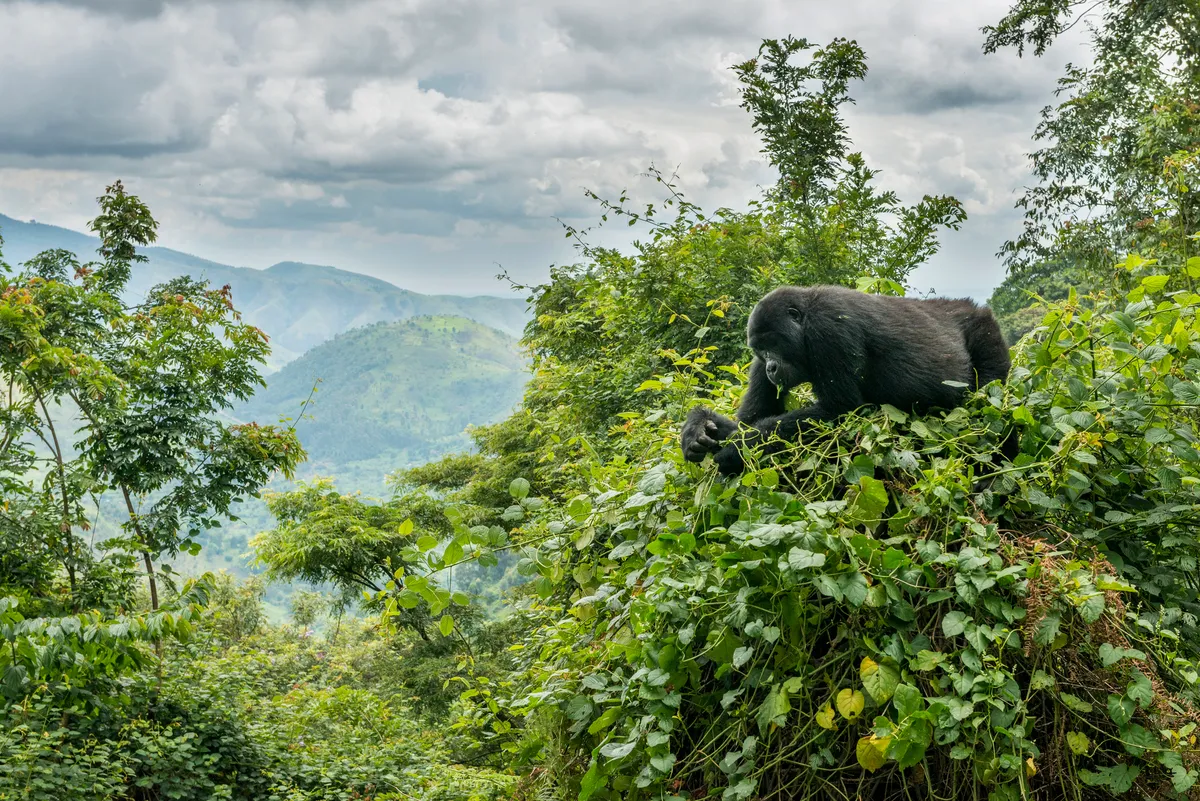
The two species live in central Africa, separated by a vast swathe of rainforest, and are both listed as Critically Endangered on the IUCN Red List.
Why are gorillas endangered and how many gorillas are left?
The western lowland gorilla is the most numerous of the four subspecies, with population estimates often cited at 100,000-200,000. However, due to their dense, remote habitat, no one knows for sure how many exist. The least numerous is the cross river gorilla, which is confined to scattered areas of forest in Nigeria and Cameroon, and is thought to number no more than 300 individuals.
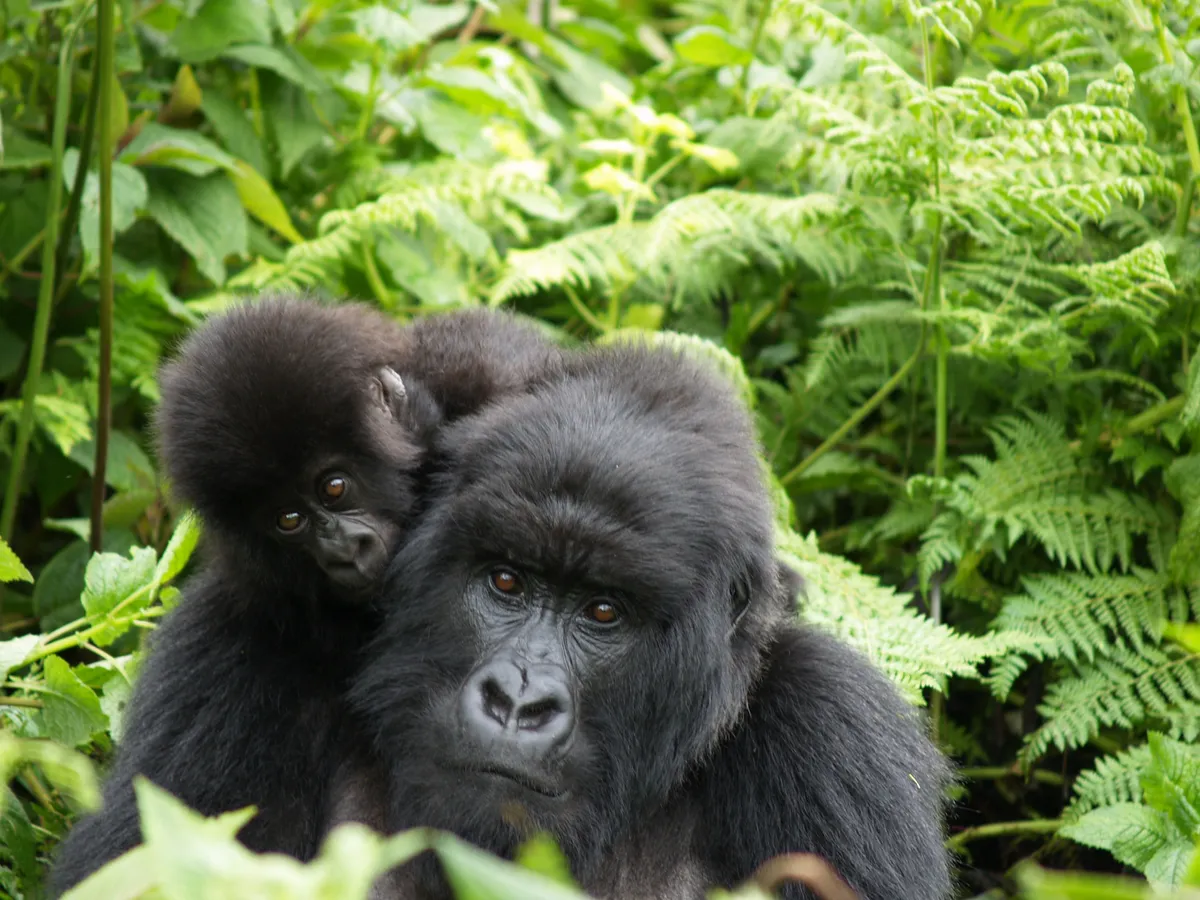
Recent surveys in the Virunga Massif estimate that the mountain gorilla population now stands at 1,004.
Sir David Attenborough, who first visited the mountain gorillas in 1979, said, "It is incredibly heartening to see how the efforts of so many different groups - communities, governments, NGOs - have paid off. The threats to mountain gorillas haven't disappeared entirely, of course, so now the challenge must be to ensure that these achievements are sustained long into the future."
Good news for mountain gorillas!
In November 2018, it was announced that mountain gorillas are no longer critically endangered, although conservation work continues.
How much does a gorilla weigh?
Gorillas are the world’s largest primates, with males weighing around 143-169kg and standing about 1.4-1.8m tall in the wild. Females tend to be 20-30cm shorter and weigh roughly half what the males do. A male gorilla's armspan is enormous, stretching 2.3-2.6m, while female gorilla's armspans are proportionally smaller.
The world's largest gorilla in the wild weighed 267kg when it was shot in Cameroon, but it wasn't as tall as another silverback gorilla that was shot in Congo in 1938. That silverback stood 1.95m tall, measured 1.98m around the chest, had a 2.7m armspan and weighed an impressive 219kg.
In captivity, gorillas have reached even greater weights, sometimes in excess of 310kg.

How strong is a gorilla?
It's hard to measure how strong a gorilla really is, but estimates range from around 4x - 10x stronger than your average human. A silverback gorilla's strength is certainly formidable. All gorillas can tear down banana trees without trying too hard, they've escaped from cages by bending the iron bars, and they have a bite force of around 1300 psi, double that of a lion.
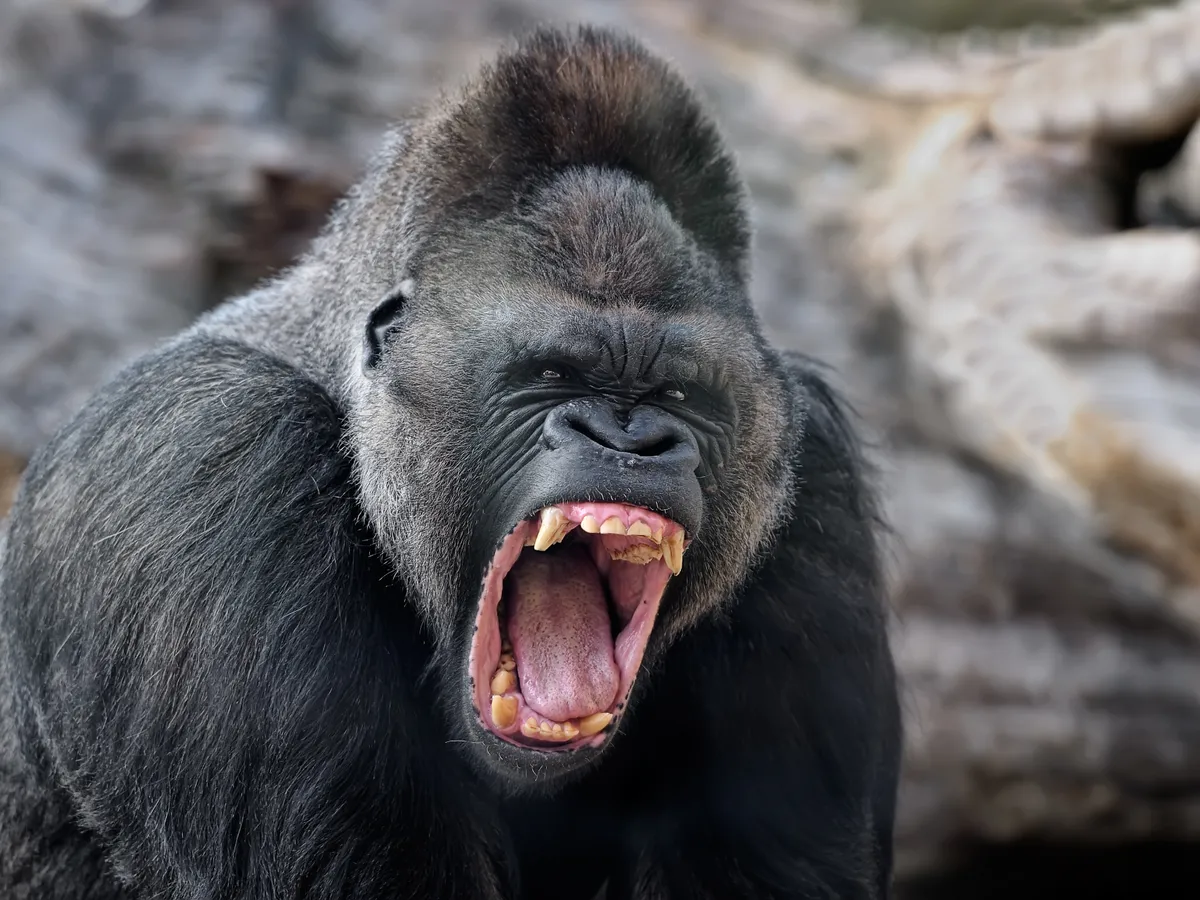
But apart from in conflicts between silverbacks, gorillas tend to be gentle giants that rarely display their full strength. They're also built quite differently to humans, which makes them more efficient climbers and better adapted to walking on all fours. That means that measuring their strength by human standards doesn't make a huge amount of sense, as they wouldn't be able to perform some of the movements we take for granted because they balance completely differently.
Please note that external videos may contain ads:
How clever are gorillas?
Gorillas are highly intelligent. They don't use tools as much as chimpanzees do, but wild gorillas have been seen using sticks to gauge water depth, bamboo as ladders to help infants climb, and recently gorillas have been seen for the first time using sticks to eat ants without being stung.
Another sign of intelligence is the gorilla's impressive communication abilities, and they've been recorded making some 25 different sounds.

One famous captive-born individual, Koko, has been taught sign language since she was a year old. By the age of 40, she had a library of about 1,000 signs and could understand some 2,000 words of English.
How good is your primate knowledge?
Find out how much you know about the extraordinary group of animals to which we belong!
What do gorillas eat?
Gorillas are mainly herbivores, and their diet mostly consists of bamboo, fruit and leafy plants, though western lowland gorillas also eat small insects. Adult gorillas can eat up to 30kg of food each day.
As roaming herbivores, gorillas play a vital role in seed dispersal. Many large fruit trees depend upon these animals to survive.

Research published in early 2016 showed that gorillas hum when contentedly when eating their favourite food.
“Gorillas seem to hum and sing when encountering food they really like,” explained Simone Pika of the Max Planck Institute for Ornithology, who led the study.
“This is very similar to our own behaviour when eating delicious food and emphasising this by also making ‘mmmmm’ sounds.”
How long does a gorilla live?
In the wild, a gorilla's lifespan is around 35-40 years, but they often live longer in captivity, sometimes for over 50 years. The oldest gorilla ever recorded was a female western gorilla at the Columbus Zoo that reached the ripe old age of 60 before dying in 2017.
Where do gorillas sleep?
Gorillas build nests in which to sleep, both on the ground and in trees, made of leaves and branches. Counting abandoned nests is an effective way for scientists to estimate population size.
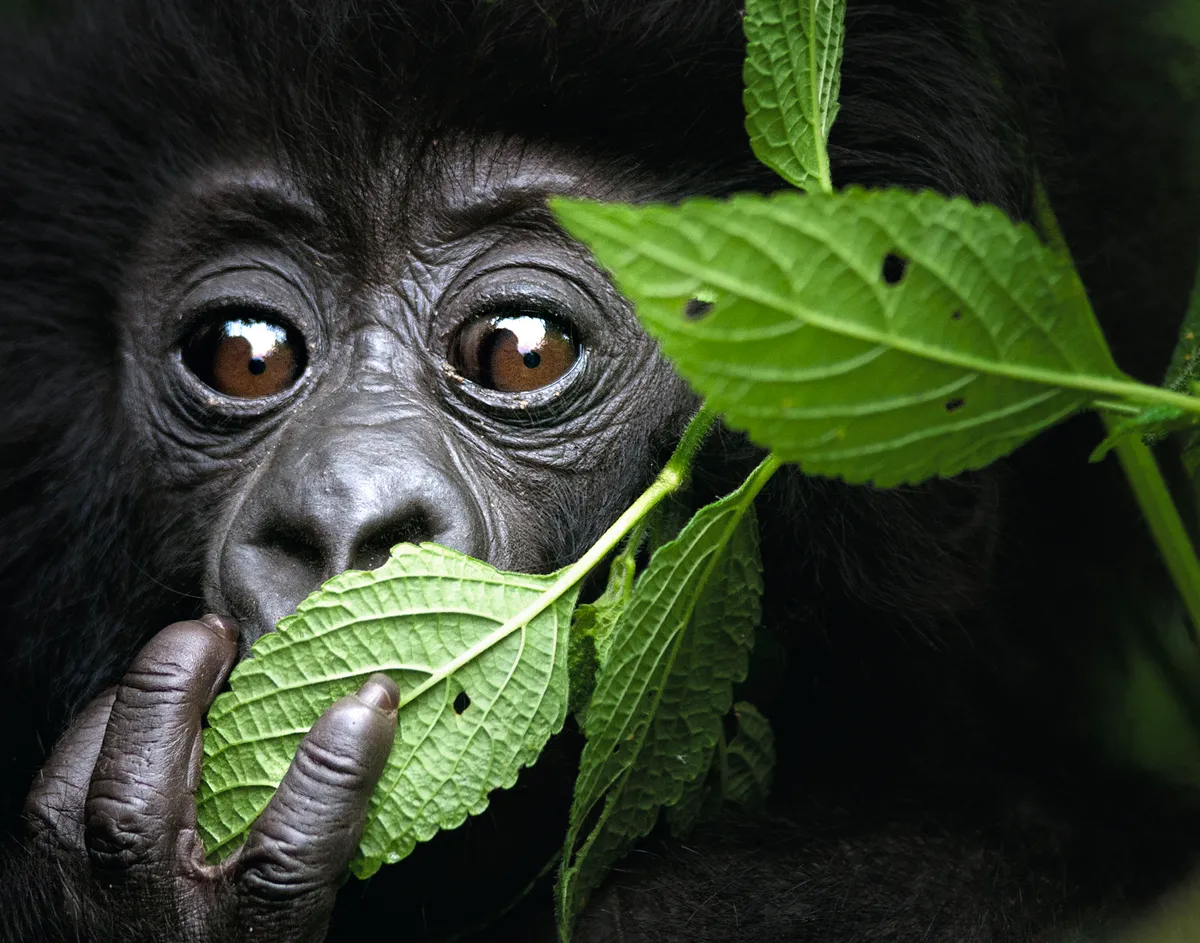
How can you tell individual gorillas apart?
Just like us, humans have unique fingerprints, but that's not much use for identification in the field. More helpfully, gorillas also have unique noseprints, which can be used to identify individuals from photographs by looking at the nostrils and the bridge of the nose.
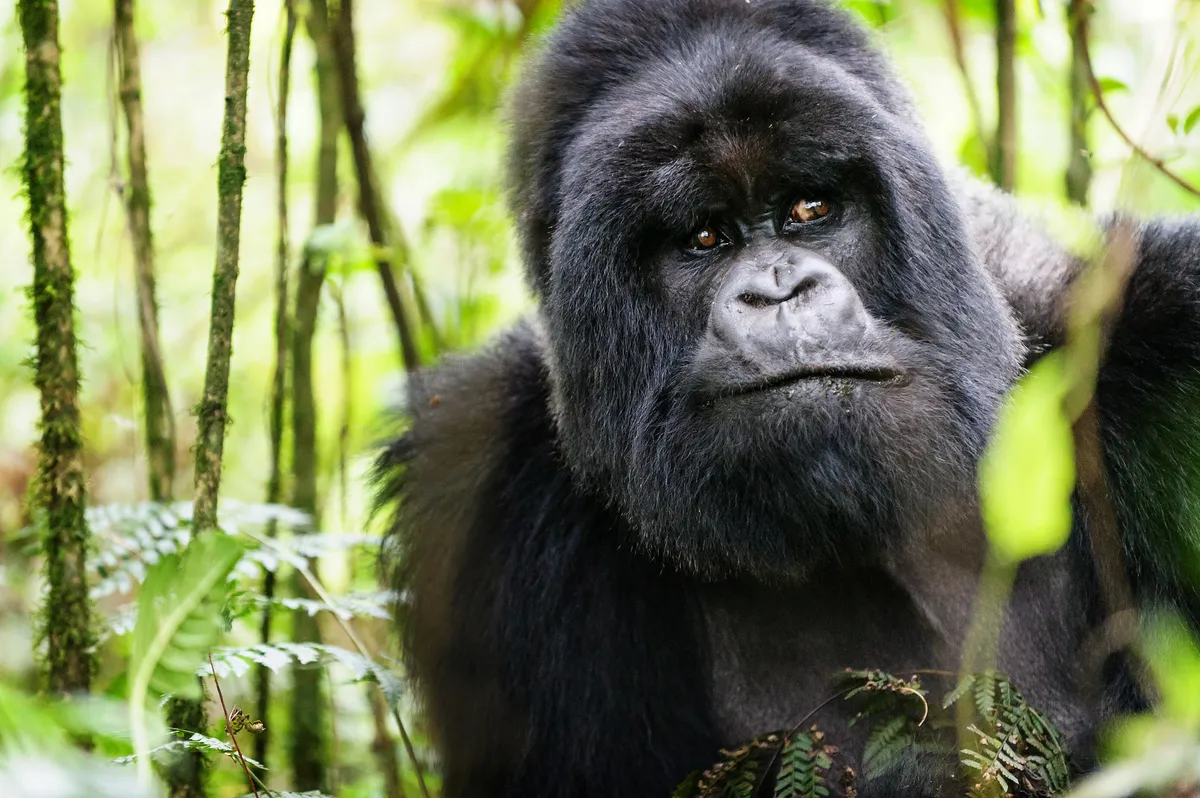
How can gorillas knuckle-walk?
Gorillas (plus chimps and bonobos) are specialised knuckle-walkers. This is not because they can’t carry their weight upright – they can walk bipedally when necessary. As knuckle-walkers, gorillas have various adaptations for stability and weight-bearing.
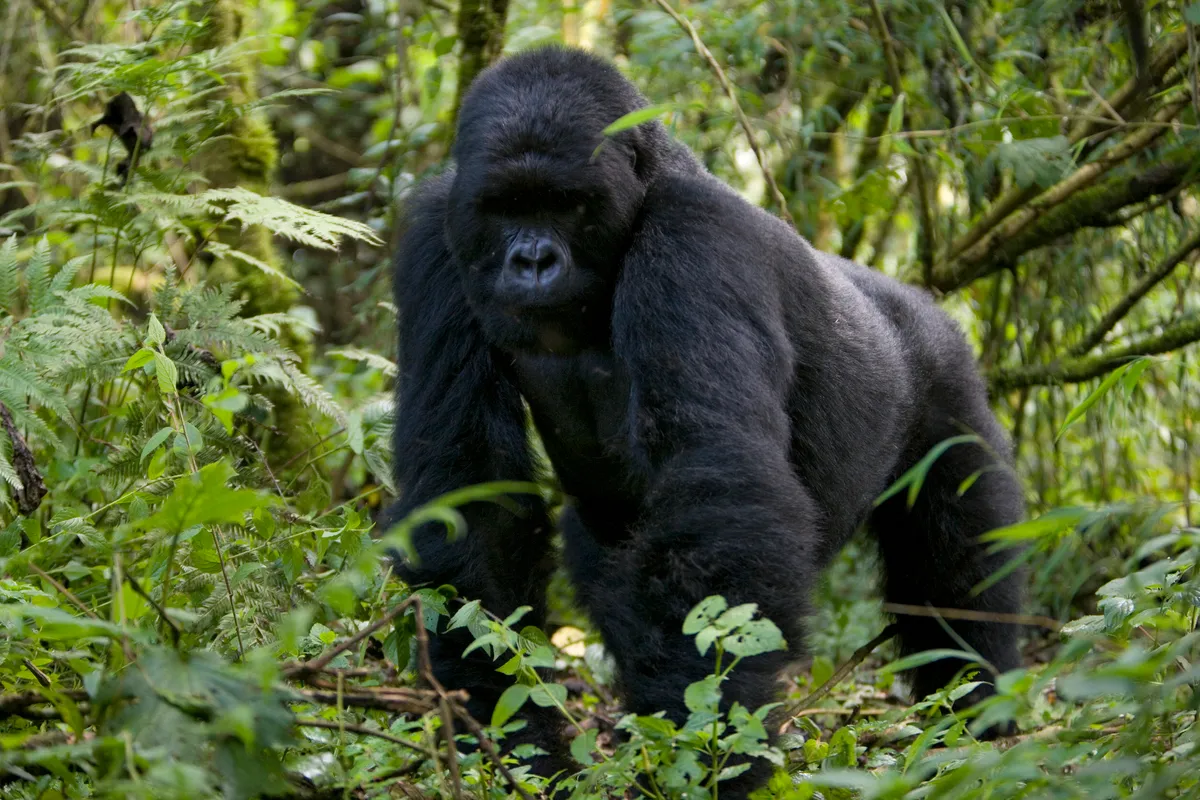
The middle and end phalanges (finger bones), which bear the animal’s weight, are widened and flattened for extra strength; in the forearm, the end of the radius that sits nearest the hand is both cupped and downward-facing, allowing it to fit snugly beside the scaphoid in the wrist; the metacarpals (knuckle bones) have ridges that ‘lock’ into place with the phalanges; and the skin on the fingers is thick as well as heavily padded.
All in all, a gorilla’s hands and wrists are strong, stable units capable of supporting a 270kg male.
How many babies do gorillas have?
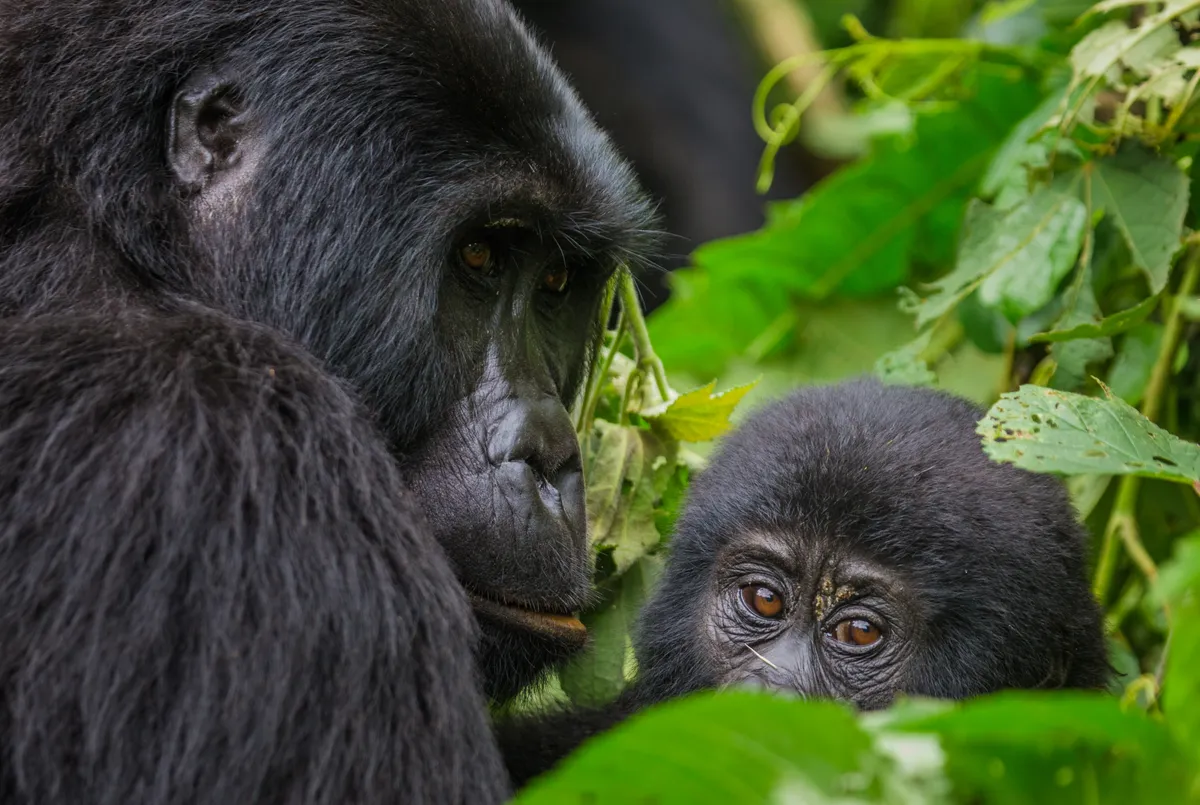
Females usually produce just one baby every four to six years. In total, a female will only give birth three or four times. Such a low reproduction rate makes it difficult for populations to bounce back following a decline.
A study in 2012 on captive populations revealed that female western lowland gorillas use a type of ‘baby talk’ to communicate with their babies. Scientists observed that mothers used more tactile and more repetitive gestures with their young than with other adults.
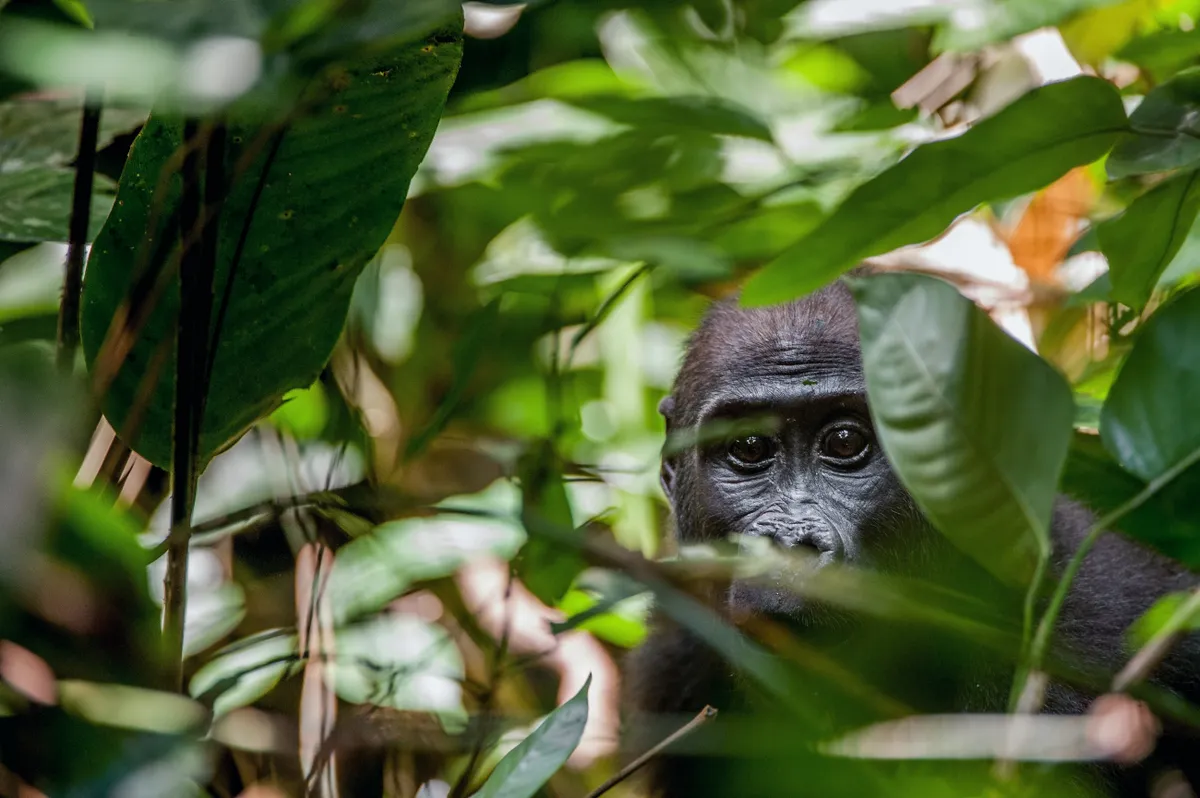
What is a baby gorilla called?
Baby gorillas are called infants, just like baby humans, which makes sense when we're so closely related.
Where do gorillas get their name from?
The history of the word 'gorilla' stretches back at least 2500 years. A Carthaginian explorer named Hanno the Navigator was on an expedition to the African west coast in around 500 BC when he came across a group of predominantly female primates that he described as savage, hairy women. We can't be certain whether these were actually gorillas, some other kind of ape or even an unknown group of people, but Hanno's interpreters told him they were called 'gorillae' and the name stuck.
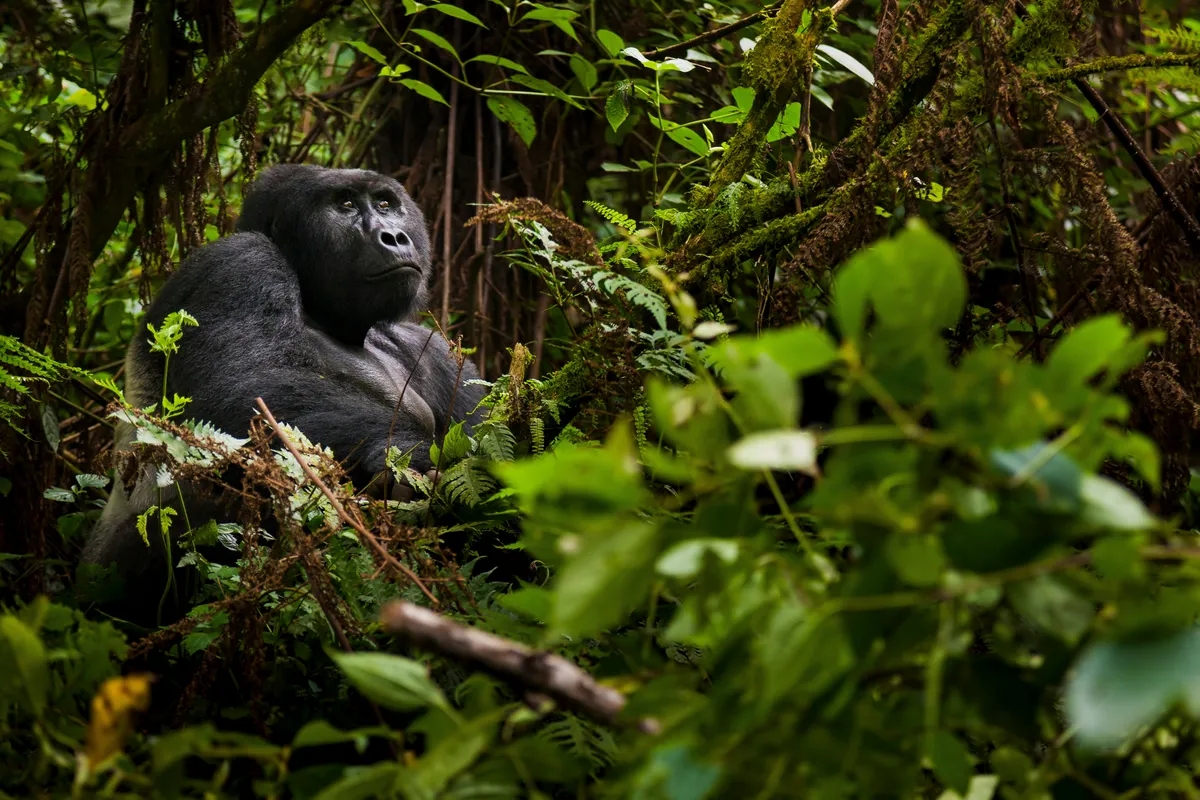
Is is true that gorillas help fight climate change?
Gorillas are the largest primates, with a huge appetite for leaves, shoots, stems, roots and fruit. An adult consumes 18–20kg of food daily, mainly foliage, and will swallow many large seeds intact. As gorilla families move through the forest to forage, they defecate, thereby depositing seeds far away from the parent trees.
Crucially, gorillas like to build sleeping nests in areas with an open canopy, and next morning tend to poop in the vicinity before heading off. This means that the dumped seeds are left sitting in piles of manure, under an uninterrupted sky – ideal conditions for germination.
So gorillas not only disperse trees but also encourage them to grow, thereby playing a key role in maintaining West and Central Africa’s tropical forests. In turn, this contributes to global carbon and water regulation, and helps to regulate our climate.
This Q&A originally appeared in BBC Wildlife Magazine, and was answered by Nikki Tagg.
Main image: A mountain gorilla silverback in Rwanda. © Panoramic Images/Getty